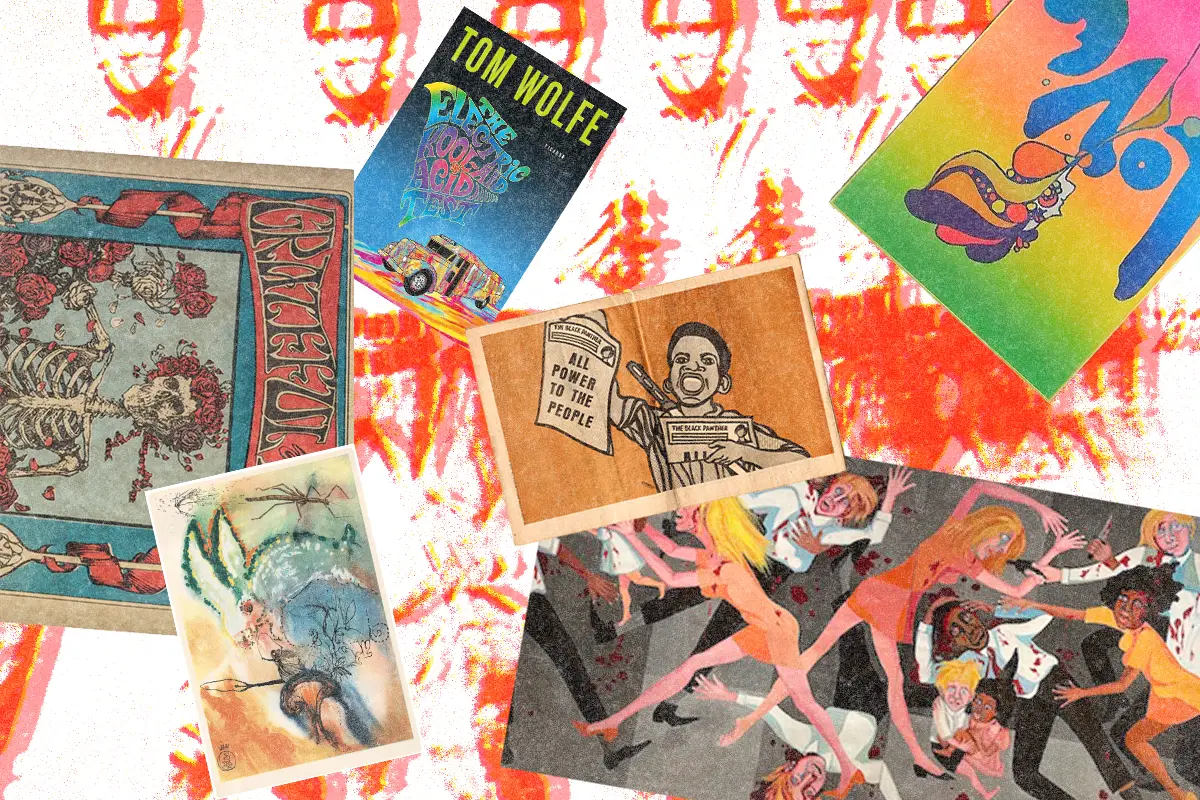Art is known for its power to transport us to different places and times—so get ready to step inside a time machine to an era of seismic cultural shifts, political upheaval, and bold artistic experimentation: the 1960s. The spiraling kaleidoscope of psychedelic art unleashed during this decade was fueled by a fusion of countercultural rebellion, widespread drug use, and the burgeoning psychedelic music scene, all set against the backdrop of the war in Vietnam and the civil rights movement.
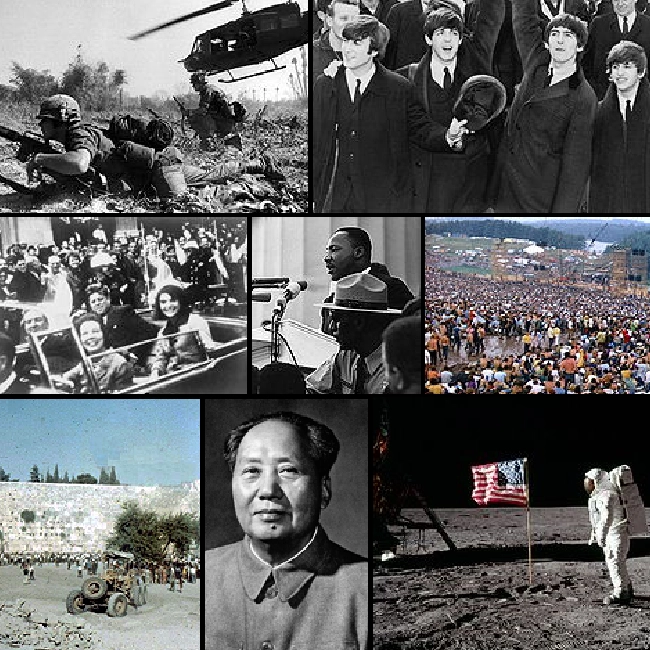
As a visual expression of the era’s challenge to mainstream norms, psychedelic art in the 1960s embraced vivid colors, hallucinatory imagery, and thought-provoking questions. Influenced by the mind-altering effects of substances like LSD, artists explored spiritual and mystical themes, often drawing from Eastern spirituality and Indigenous cultures. Moreover, psychedelic art was a platform for political activism, challenging authority and advocating for social change.
15 Classic Works of Psychedelic Art Created in the 1960s
From the hypnotic sounds of Jimi Hendrix to the visionary art of Salvador Dalí, these sixteen iconic psychedelic artworks both reflected and helped to foster the 1960s spirit of experimentation and social change. By disseminating mass-produced objects like concert posters, as well as carefully crafted works of film, literature, and painting, artists sought to support their generation’s quest for revolutionary liberation.
READ: We Can’t Stop Staring at This Trippy, Psychedelic Art
One Flew Over the Cuckoo’s Nest by Ken Kesey (1962)
While not explicitly psychedelic, this novel by author and psychonaut legend Ken Kesey is a literary touchstone for the era, delving into the psyches of individuals institutionalized in a mental hospital. Its themes of rebellion against authority and the exploration of altered states of consciousness, to say nothing of the book’s downright hallucinatory sequences of prose, resonate strongly with the psychedelic ethos of the 1960s.
Eight Elvises by Andy Warhol (1963)

The pop art of Andy Warhol had an enormous impact on psychedelic art in the 1960s, transforming both artists’ and consumers’ relationship to mass marketing and pop culture. This silkscreen painting features multiple overlapping images of Elvis Presley holding a gun. Its stuttering, uneven repetitions evoke the effects of psychedelic drugs, as well as the way that “expanded” minds might re-evaluate the saturation of celebrity culture.
The American People Series by Faith Ringgold (1963-1967)
Faith Ringgold’s series of paintings provides a powerful exploration of race, identity, and social justice in America through the eyes of a Black woman living through the turbulent upheavals of the 1960s. She presents bold human imagery in unsettling arrangements, such as American People Series 20, which calls to mind the shock of Pablo Picasso’s Guernica. Ringgold challenges viewers to confront issues of racism and inequality, making her work both politically charged and psychedelic in aesthetic.
How to Grow Shrooms Bundle
Take Both of Our Courses and Save $90!
The Grateful Dead’s Skeleton and Roses poster by Stanley “Mouse” Miller and Alton Kelley (1966)
This poster—among the many that Mouse and Kelley created for concerts by powerhouse psychedelic band The Grateful Dead—features a striking image of a skeleton surrounded by roses. Its intricate design and psychedelic imagery captured the quintessential aesthetic of 1960s counterculture and how it presented the psychedelic rock scene.
Emory Douglas’s Black Panther posters and iconography (1960s)
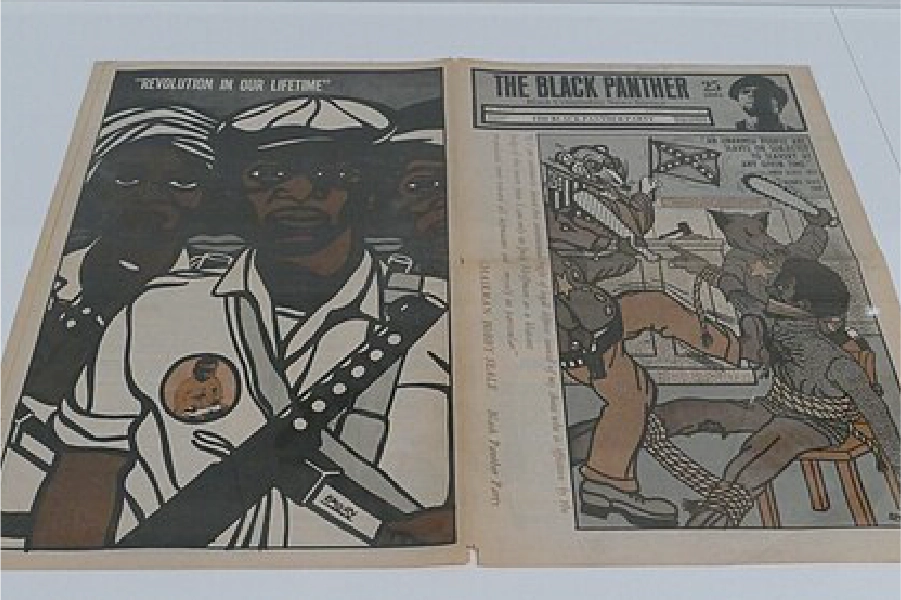
Graphic artist Emory Douglas’s iconic artwork served as the visual voice of the Black Panther Party, conveying messages of empowerment, resistance, and solidarity. Fearlessly framing the party’s goals with powerful imagery and striking fonts, his posters were an essential tool of the Black Panthers’ revolutionary drive. Douglas’s work continues to inspire activism today, while the artist himself still produces graphic art such as for the Black Lives Matter movement.
READ: Writer Carlo McCormick Brought New York City’s Psychedelic Art Scene to the World
The album cover for the Jimi Hendrix Experience’s Axis: Bold as Love by Roger Law (1967)
Sure to still be found on the walls of many college dorm rooms, Roger Law’s iconic album cover features a kaleidoscopic collage of imagery surrounding a depiction of Jimi Hendrix inspired by a photographic portrait by Karl Ferris. Controversially, Law chose to depict Hendrix and his bandmates as various forms of the Hindu god Vishnu. Though the electric colors and mirrored geometry are beyond typical of 1960s psychedelic art, Hendrix later said he regretted using this cover, wishing he’d gone with something influenced by his own Native American heritage instead.
The poster for Big Brother and the Holding Company show at Avalon Ballroom by Victor Moscoso (1967)
Often imitated but never duplicated, the psychedelic concert posters made by Spanish-American artist Victor Moscoso continue to inspire artists with their imaginative figures presented in bold colors. This particular poster is a psychedelic masterpiece, with a hypnotic design that speaks to the intensity of the 1960s music scene.
The Electric Kool-Aid Acid Test by Tom Wolfe (1968)
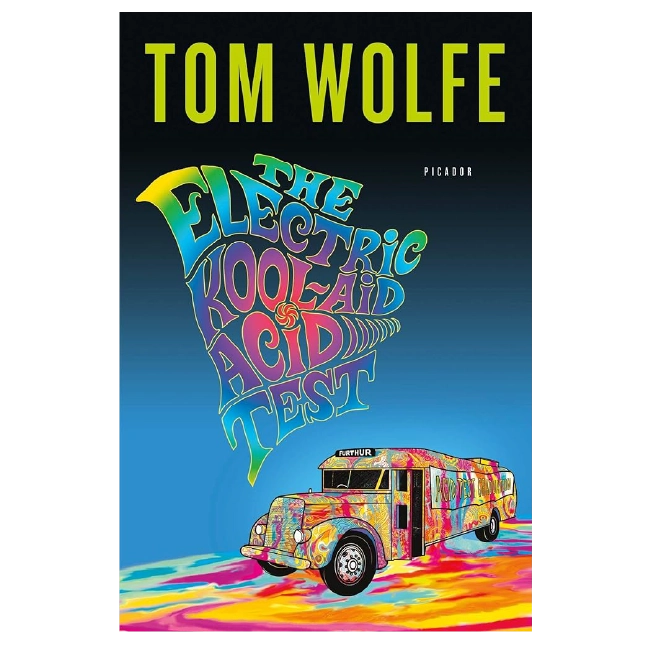
Tom Wolfe’s nonfiction book, written in the then-emerging tradition of Gonzo journalism, chronicles Ken Kesey and the Merry Pranksters’ psychedelic cross-country road trip. It is one of the greatest documents we have of 1960s counterculture, featuring the gang’s “acid tests” (LSD-fueled parties) and run-ins with iconic figures like Allen Ginsberg, Hells Angels, and the Grateful Dead.
Yellow Submarine by The Beatles (1968)
This work by The Beatles (which Wikipedia describes as an “animated jukebox musical fantasy surrealist adventure comedy film”) takes viewers on a surreal journey, traipsing through some of the band’s most iconic songs with vibrant, whimsical animation. The film joyously reflects the band’s embrace of psychedelia and the massive impact they had on spreading 1960s counterculture around the world.
Electric Ladyland by The Jimi Hendrix Experience (1968)
Electric Ladyland is a quintessential psychedelic rock album that pushed the boundaries of musical experimentation. It features Hendrix’s virtuosic guitar work along with innovative production techniques and lyrics exploring themes such as love, freedom, and existentialism. It is still widely held to be a masterpiece, captivating listeners with its otherworldly soundscapes.
The Love poster by Peter Max (1969)
Another widely disseminated poster, Peter Max’s Love is a perfect example of 1960s psychedelic art, featuring what we now recognize as the archetypal features of swirling patterns and cosmic imagery. Its optimistic and uplifting message of love and peace resonated with the hippie movement and the highest aims of psychonauts.
Aoxomoxoa by the Grateful Dead (1969)
This seminal album in the psychedelic rock genre embodies the 1960s spirit of improvisation and eclectic instrumentation. Weaving together folk, blues, and psychedelic influences, the songs form a mesmerizing tapestry that transports listeners and stands as a testament to the Grateful Dead’s unique approach to music-making, which continues to captivate crowds today.
Easy Rider directed by Dennis Hopper (1969)
Often considered a successor to Roger Corman’s landmark film The Trip, Dennis Hopper’s road drama follows two bikers traveling from Los Angeles to New Orleans with drug money stashed in their tanks. Soundtracked by artists like The Byrds, Jimi Hendrix, and Steppenwolf, the film stands out as a poignant commentary on the tensions and contradictions of American society and the ideal of freedom during a time of profound social change
Illustrations of Alice’s Adventures in Wonderland by Salvador Dali (1969)
The surrealist master Salvador Dali’s little-known illustrations for Lewis Carroll’s classic tale reinterpret the Wonderland narrative in a way that can only be described as “even trippier than the original.” His dreamlike imagery and distorted perspectives imbue the story with a hallucinatory sensibility, inviting viewers to fall even deeper down the rabbit hole.
Revolutionary (Angela Davis) by Wadsworth A. Jarrell (1971)
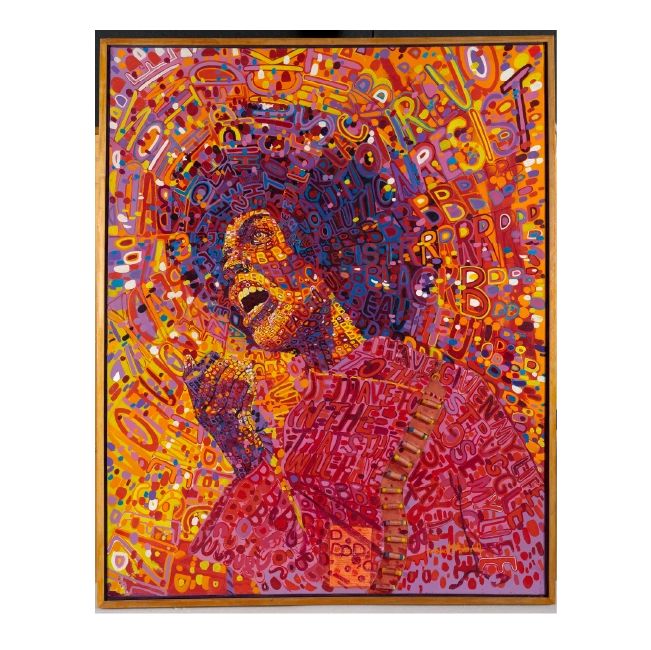
Though created at the dawn of the next decade, Wadsworth A. Jarrell’s depiction of activist Angela Davis and her revolutionary spirit undoubtedly reflects both the political and psychedelic currents of the 1960s. The bold colors and dynamic composition convey Davis’s strength, determination, and commitment to the civil rights movement and the struggle for racial equality. The painting serves as a potent monument to resistance and empowerment, celebrating Davis as a revolutionary figure and inspiring viewers to join her continued fight.

DoubleBlind is a trusted resource for news, evidence-based education, and reporting on psychedelics. We work with leading medical professionals, scientific researchers, journalists, mycologists, indigenous stewards, and cultural pioneers. Read about our editorial policy and fact-checking process here.

DoubleBlind Magazine does not encourage or condone any illegal activities, including but not limited to the use of illegal substances. We do not provide mental health, clinical, or medical services. We are not a substitute for medical, psychological, or psychiatric diagnosis, treatment, or advice. If you are in a crisis or if you or any other person may be in danger or experiencing a mental health emergency, immediately call 911 or your local emergency resources. If you are considering suicide, please call 988 to connect with the National Suicide Prevention Lifeline.
